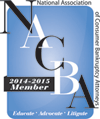From 1978 to 1990 all student loans owed for five years or more were dischargeable in bankruptcy. Student loans owed for less than five years were dischargeable if “undue hardship” could be showed. In 1990 the waiting period was increased to seven years. Before 1990 the restrictions on dischargeability of student loans did not apply to Chapter 13 bankruptcy. Starting in 1991 federal student loan borrowers in default became subject to administrative wage garnishment where no judgment from a court was needed before wage garnishment could occur. Also in 1991 the six-year limitation on the collection of federal student loans was eliminated so that now there is no limitation on how long the U.S. can collect federal loans from debtors.
In 1996 debtors in default on federal student loans became subject to having any government benefits offset, including Social Security benefits. In 1998 the seven year waiting period was eliminated, leaving “undue hardship” as the only path to discharge. In 2005 Congress added restrictions on the dischargeability of some private student loans. Unfortunately, undue hardship, for student loan dischargeability, is not defined in the bankruptcy code. The limited legislative history suggests it was to focus on the amount and reliability of a debtor’s future income and resources to maintain a minimal standard of living for the debtor and the debtor’s dependents. There was no suggestion that good faith, past payment history or the debtor’s reason for filing bankruptcy was important to the undue hardship analysis.
In Iowa, courts use a “totality of circumstances” test to determine whether undue hardship exists. This test looks at 1. the debtor’s past, present and reasonably reliable future financial resources, 2. a calculation of the debtor’s reasonably necessary living expenses, and 3. any other relevant facts and circumstances surrounding the debtor’s bankruptcy. In November, 2022 the Department of Education and the Department of Justice issued guidelines for how the government will review new complaints seeking a discharge of federal student loans. See https://thompsonlawoffice.net/829/new-guidelines-for-student-loan-discharges-in-bankruptcy/. Over 600 debtors have used these new guidelines within the last year, with most of these debtors receiving whole or partial discharges of their federal student loans. Using the new guideline process can still be expensive but for debtors who qualify it might be money well spent. Contact Nancy L. Thompson for more information.



